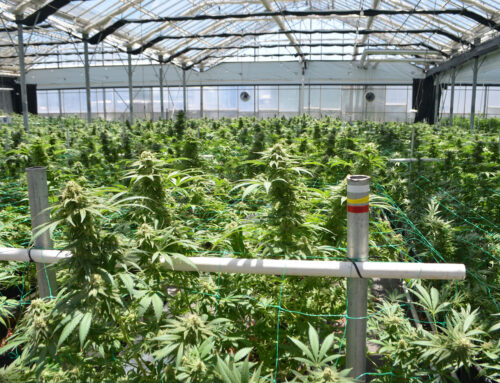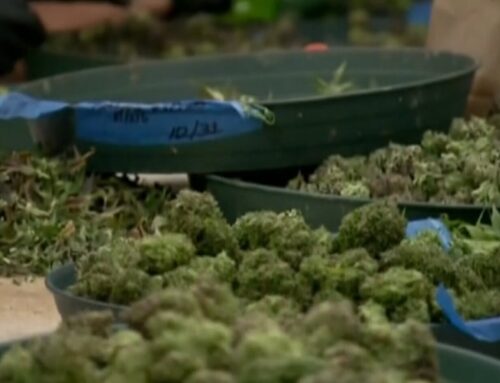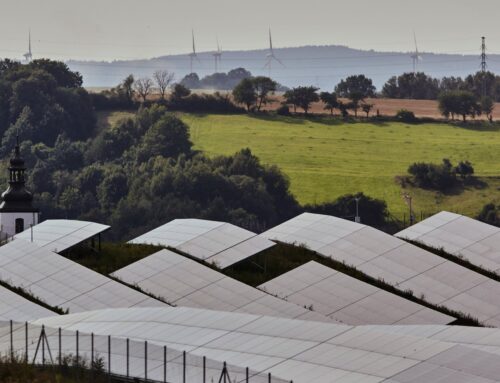Colorado’s first biomass energy plant closed, set for bankruptcy auction
December 10, 2024
The pioneering biomass plant in Gypsum — the first in the state to begin converting shredded beetle-kill trees into electricity — has shut down and its owner has filed for bankruptcy protection citing more than $40 million in debt.
The closure has terminated wildfire mitigation efforts in Colorado’s forests and reveals the growing struggle of burning biomass for electricity as demand grows for more affordable renewable energy options like solar and wind. The highest bidder for the plant and the 94-acre property along the Eagle River in Gypsum — revealed last week in Colorado U.S. Bankruptcy Court — is an Illinois-based real estate firm that proposes paying $2.45 million. The trustee in charge of the sale said the Urban Investment Research Corp. bested four potential bidders — and 22 who expressed interest in the plant and its assets — and the commercial real estate owner would not renew a contract to sell electricity to Holy Cross Energy.
“This is a huge hit to our forests, forest health, wildfire mitigation, watershed protection and water quality in our communities on the Western Slope,” said Kendric Wait, the general manager of Forest Range Products, the Colorado company hired by the Forest Service to mitigate wildfire threats and supply the Gypsum plant with forest slash for conversion into electricity. “I think everyone in our communities should be really concerned about this. There are entire forest projects that will not be done because of this. That impacts every resident up here.”
The $56 million Eagle Valley Clean Energy Biomass Plant opened in 2013 with a federally funded mission to burn as much as 250 tons of shredded beetle-kill trees a day to produce steam that turned a turbine to generate enough electricity to power as many as 10,000 homes a year. The plant abruptly closed last month. The “stalking horse” bid from the Illinois firm selected by the trustee includes $550,000 for the plant, equipment and 7,000 tons of shredded wood biomass on a 19.8-acre lot and $1.9 million for an empty 73.8-acre parcel next to the facility.
When Holy Cross partnered with the plant in 2013, the energy provider was hoping to have 20% of its power coming from renewables. Now, the nonprofit electric co-op serves its 45,000 members with about 90% of its electricity coming from clean energy, and most of that is coming from solar and wind farms. The Gypsum biomass plant provided about 7% of the co-op’s energy and was among the first renewable providers enlisted by Holy Cross. The co-op paid a lot for biomass electricity back then.
“It was great because it was a consistent supply but it was our most expensive source. Because it was built 20 years ago and renewable was expensive at the time and we chose to spend more at that time because we thought renewables were important,” said Jenna Weatherred with Holy Cross. “At this point, renewables are our cheapest form of energy.”
Weatherred said the Gypsum plant cost a lot to run, especially compared to solar and wind energy generators.
“It’s really expensive to cut down beetle kill and drive it over to the plant,” she said.
HISTORY OF LAWSUITS
The plant struggled from the start as the Utah-based owners battled lawsuits filed by the Town of Gypsum and the Oregon company that built the plant. A fire in 2014 idled the plant for nearly a year. In April 2019, Utah’s Evergreen Clean Energy sold the plant to New York-based Greenbacker Renewable Energy Co., LLC, which owns and manages $3.8 billion in renewable energy operations across the country that provide enough clean energy to power 808,000 homes a year.
That sale — for an undisclosed price — ended the plant owners’ ongoing lawsuits with Gypsum and the construction company. The owners who opened the plant also paid $2.6 million in 2019 to settle allegations that they defrauded a federal renewable energy funding program.
Earlier this year Greenbacker and its subsidiary Eagle Valley Green Energy filed for bankruptcy in U.S. District Court in Denver. The Rural Utilities Service in the Department of Agriculture is cited as the top creditor with secured claims, owed $35.4 million from a 2013 loan. The filing includes $4.6 million in unsecured claims from dozens of contractors and service providers. The filing cites $3.2 million owed to the Greenbacker Renewable Energy Corp. The filing also notes more than $630,000 owed to West Range Forest Products. The Gypsum-based West Range has long-term stewardship contracts with the Forest Service, tasked with logging operations across several regions.
Industrial facility with smokestacks releasing steam or smoke, set in a snowy landscape surrounded by hills under a clear blue sky.
It’s not the first time a biomass processor has shut down in Colorado.
Confluence Energy opened in 2007 with a plan to process beetle-kill trees at a facility in Kremmling. The company acquired a competitor in Walden in 2013 and the two facilities produced pellets for heating, mulch and wood-fiber products for pet beds and absorbent pads for the oil and gas industry. Confluence Energy was the largest producer of pellets in the West when it filed for bankruptcy protection in 2018, citing $14.9 million in debt and $11.2 million in assets that included the 20,000-square-foot processing plants in Kremmling and Walden. Confluence reported revenues of $4.7 million 2017, down from $5.9 million in 2016.
INNOVATIONS IN RECYCLING
Still, there are innovations and opportunities circling Colorado’s forest trash.
Xcel Energy wants to convert the coal-fired power plant in Hayden — which is set to retire in 2028 — into a 19-megawatt biomass facility that would burn forest waste and pine beetle-kill wood to generate enough electricity for 36,000 homes a year.
California-based Charm Industrial in July opened a facility in Fort Lupton that processes agricultural waste and wood slash collected from Front Range forests into a biomass liquid called Bio-oil, which it then injects into orphan oil and gas wells. The company has collected more than $100 million from investors and partnered with companies like Google, J.P. Morgan, Meta and Stripe that paid $53 million to reduce their carbon footprints by permanently removing carbon from the atmosphere.
The Loveland-based Biochar Now burns shredded trees collected from forests in 40 high-heat, oxygen-deprived kilns at a facility in Berthoud to create biochar, a sort of charcoal that is used for improving soil, adding to livestock feed and filtering water. The process captures carbon dioxide before the wood rots on a forest floor and releases greenhouse gases. And like Charm Industrial, the innovative Biochar Now sells carbon offsets to companies seeking to green up operations.
The newly formed Colorado Mass Timber Coalition works to encourage timber products in new buildings and bolster the economics around local timber harvested from on the state’s forests. The group has 280 members, up from 70 in April.
The growing number of members reflects interest and opportunity in finding uses for forest products in Colorado, said Will Lepry, the first director of the coalition who took over in April.
“The more end markets we have the cheaper it is to manage the forest to make them healthy,” Lepry said. “It’s not good that the Gypsum plant is shut down. That’s one less place for slash to go. That means it’s going to be left in place or burned in slash piles instead of being used to create energy.”
LOOK AT BIOMASS DIFFERENTLY?
Looking at biomass as an energy source is the wrong perspective, said Scott Fitzwilliams, the head of the White River National Forest.
“This is not about making energy. It’s about treating forests,” Fitzwilliams said.
The 2.28 million-acre White River National Forest uses mechanized timber harvesting to treat about 2,000 acres a year as part of its fuel-reduction wildfire mitigation and vegetation management program. It pays contractors as much as $2,500 an acre for that work. About 45% of the slash and scrap wood harvested by those contractors was delivered to the Gypsum plant for biomass-generated electricity.
“The loss of this plant is really disappointing for our vegetation program,” Fitzwilliams said. “We are not exactly sure if there will be someone else to fill that void and take that material.”
Wait, with Forest Range Products, has ongoing mitigation projects on public land around Summit County, Vail, Eagle, Glenwood Springs and the Roaring Fork Valley. He charges the Forest Service cost plus 10% and the bankruptcy of the Gypsum biomass plant will end several of his company’s wildfire mitigation projects. Without the contract with Holy Cross, “the power plant is not worth anything,” Wait said.
As the bankruptcy sale moves through the process, Wait hopes Holy Cross members can urge the co-op to keep biomass in the energy provider’s renewable portfolio.
“Biomass has always been expensive,” Wait said. “But the price for this plant is cheap and the benefits are just so huge.”
Trying to make biomass energy economical is a challenge as the cost of wind and solar energy drops. Burning slash for energy should be seen as a tool for reducing the cost of wildfire mitigation, Fitzwilliams said, not as a rival for cheaper natural gas, solar and wind energy. He toured Europe a few years ago to study the vibrant biomass industry in places like Germany and Austria, “where it is heavily, heavily subsidized,” he said.
“It’s just too labor intensive and equipment intensive — with very technical machinery — to not have that subsidy,” Fitzwilliams said. “In Europe, where freezing to death or not depends on (Russian President Vladimir) Putin, the incentives to subsidize other energies like biomass are very high.”
In the Western United States, those incentives should include reducing the threat of a wildfire that costs $20 million to $50 million to fight, Fitzwilliams said.
“Our public policy folks should focus on forest health and whatever beneficial consequence is great,” Fitzwilliams said. “Spending $600,000 on a treatment that prevents a $50 million wildfire is a good investment and it protects watersheds for so many rural communities. I think we need to look at biomass in a different way.”
Search
RECENT PRESS RELEASES
Related Post



